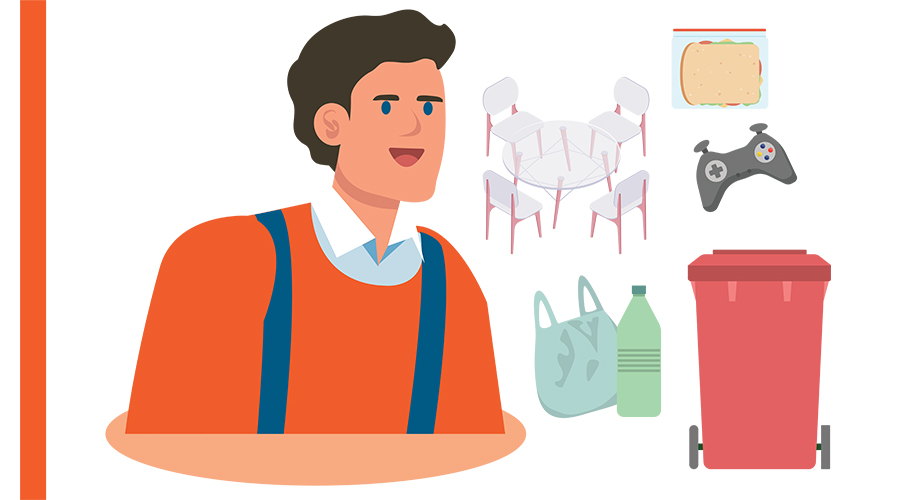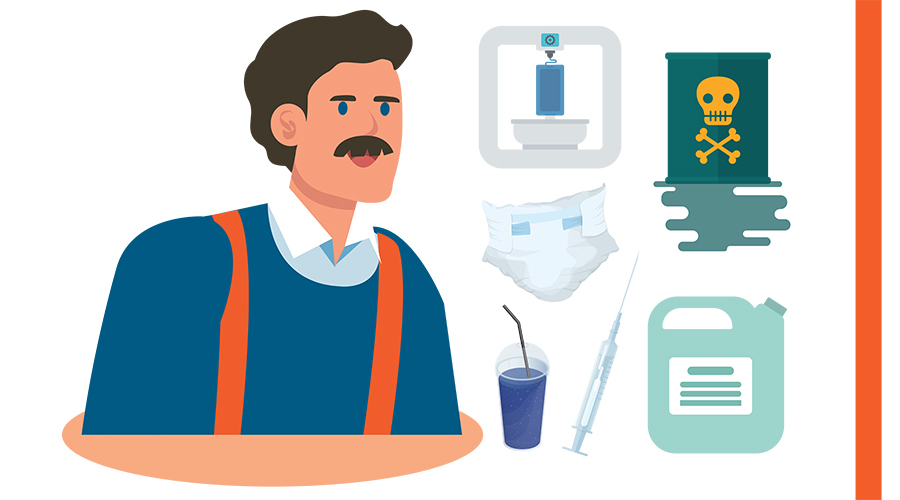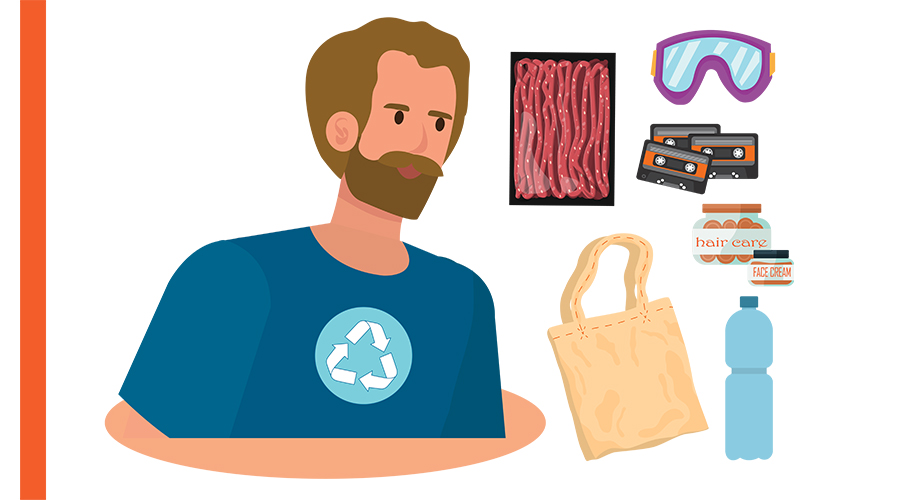
Plastic is everywhere. Starting from billiards, and now featured across billboards, plastics has dominated the manufacturing industry and transformed society into the shiny and durable landscape it is today. This has naturally come with consequences (click here to read about recycling here at Rotadyne), however not all are negative. In fact, plastics have provided us with a unique creative flexibility afforded by no other production material, which allows us to manufacture items in mass quantities which are uniform, quality, and totally customisable.
But what exactly are these evolutionary materials?
Plastics, short for thermoplastics, refer to various branches of strong, man-made substances which are formed out of polymers. Polymers are long molecules built around chains of carbon atoms. All polymer plastics hold similar characteristics and basic atomic principles: for example, their large molecules create a natural resistance to bacteria and fungi. Plastic materials also generally do not burn under heat, but instead become pliable; the word plastic itself comes from Greek word plastikos, meaning capable of being shaped and moulded. This is the primary strength and perhaps most attractive quality of plastic materials.
However, like branches in a tree, the plastics family may share the same root, but they still hold individual uniqueness which address varying product characteristics or features. Ultimately, some plastics are more appropriate for certain types of production, and sometimes that means selecting the right plastic for your product can be a challenge.
At times, materials are selected due to their resistive or protective properties, for example the use of chemically resistant Nylons on the inside of petrol tanks. Other times, more than one material can be selected using double-wall processes. For example, petrol tanks may have an external layer of HDPE or LLDPE for aesthetic purposes, while still having an internal layer of Nylon for protection.
Deciding which plastic type is most appropriate for your product is an important step in product development process. Thankfully, Rotadyne is well acquainted with the plastics family, and so we are prepared to help. At Rotadyne, we provide expert council to ensure our clients select the perfect plastic for their project.
POLYETHYLENE – PE

This is by far the most popular plastic in rotational moudling manufacturing. Accounting for approximately 85% of rotationally moulded plastic production, this material actually has many forms, including branched, unbranched and cross-linked variations.
Tough, mostly flexible, and waterproof, PE also has a high recycling turnover, and is a highly valuable and versatile branch of the plastics family tree.
However, like all plastic types, PE comes with its limitations. Low strength and a low melting point (compared to other thermoplastics) means it is not the most durable in extreme conditions.
However it has high ductility, good impact strength and is an excellent insulator particularly with chemicals and electricity. It can also be produced in various levels of transmissivity, from almost clear, to a solid tint.
PE is used across multiple industries, appearing in industrial products, transportation devices and domestic commodities. Everything from recreational goods to agricultural gear, Polyethylene components have captured the marketplace.
POLYPROPELENE – PP

At first, Polypropylene appears to be the twin of LDPE, a specific type of polyethylene. However, PP exhibits higher stiffness and temperature resistance. It also demonstrates excellent resistance to chemicals. It is tough but flexible, very fatigue resistant.
The limitations of PP include a susceptibility to UV degradation, its high flammability, and its tendency to oxidise. It can be tinted in an opaque colour meaning it is useful for applications requiring light transfer, either practically or for aesthetic purposes. However its poor bonding qualities make it difficult to paint.
In manufacturing, PP has a relatively narrow processing window; overheating causes this loss in impact strength, and PP requires slow cooling to avoid loss of physical properties.
However, it is diverse in that it can be processed through any moulding process and most mould types, so long as there is a tight parting lines and smoothly drafted surfaces. Rotationally moulding PP has often resulting in lower impact strength, and so it is mostly used for injection moulding.
Its on-field application is generally similar to PE; its superiority in chemical and temperature resistance allows it to perform in conditions PE struggles in, making it significantly more versatile. From radioactive material containers to disposable diaper tabs, this relatively new material even features in 3D printing.
POLYETHYLENE TEREPHTHALATE – PET

This plastic family member is planet friendly; PET is the number one most recycled plastic type as it is low diffusion coefficient which increases recyclability. In the landfill, it only has a 5-10 year decomposition rate, which is low compared to its relatives who decompose in somewhere between 50 years and never. However, it is typically used in single use plastics.
Waterproof, heat resistant, tough and lightweight, PET is a well rounded plastic. It has a solid gas and moisture barrier, with a broad temperature range use. As it does not break or fracture, and is shatter resistant, it is sometimes a suitable replacement for glass. PET is also known for its excellent electricity insulation.
However, PET is also faced with lower impact strength, moldability, and poor burning behaviour. It is strangely also quite affected by boiling water, which causes significant and immediate warpage. So while it is largely used for plastic bottles, we wouldn’t recommend heating it up.
Other uses for PET include tape, packaging trays, food packaging, cosmetic jars and other transparent films. Recycled PET specifically is used for fibre in carpets and tote bags, films and sheets. Pre-moulding heat treatments can even make recycled PET safe for food contact and packaging.
NYLON

What can’t Nylon do? The first high-performance plastic suitable for rotational moulding, it is considered the most dynamic plastic, being used in a huge range of industries from synthetic clothing to vehicle interiors and safety devices, and of course is easily moulded into solid plastic products and parts.
It has the best resistance to sunlight and has superior colourfastness. Other performance characteristics include its excellent bear and wear properties, and its reduced noise, weight, and wear of mating parts. Nylon is often the plastic of choice for engine compartments in vehicles due to its impressive strength, and its impeccable temperature and chemical resistance.
Nylon struggles, however, with demoulding; due to its stiffness, it is difficult to accommodate for designs which include deep textures or undercuts, which should overall be avoided with this material. It is compatible with a large variety of additives and modifiers which make it suitable for its diverse product range. Its already proven versatility combined with ongoing research reveals a promising future for this plastics family member, with an anticipated increase in its use in rotational moulding.
Commonly used in products such as wheels, gears, machinery parts, pads, and even features in the music industry in its usefulness for making guitar strings.
POLYCARBONATE – PC

Providing both transparency and high service temperature for the first time, this plastic transformed rotational moulding possibilities in its invention in 1968. It is currently the fourth most commonly used plastic family member for rotational moulding, but can be moulded using any moulding process.
PC is also very dimensionally stable, meaning it has a low shrinkage rate and minimal warpage. It is strong, rigid and has a high service temperature which makes it an ideal replacement when PE or even Nylon is unsuitable. Finally, its excellent weatherability makes it perfect for outdoor applications.
However, as always, there are the inevitable flaws. To begin, PC is on the pricier side of plastics. It also has limited chemical resistance. It can be coloured using oven-suited pigments. PC is also notch-sensitive, meaning it loses a significant amount of impact strength when moulded into components with sharp corners.
Its most common applications are in glass replacements, such as in translucent lighting globes. It is also used in containers, LED lights, helmets and mechanical goods.
ACRYLONITRILE BUTADIENE STYRENE – ABS

Ever step on a Lego brick and wonder how something so small and colourful can be the cause of such horrifying pain? The answer is ABS.
While it only possesses medium strength, it is known for its incredible impact strength, shock absorption, formability and rigidity. Which is why it is able to almost cripple a grown man, without shattering into hundreds of plastic pieces itself.
Other properties include its chemical resistance, excellent temperature resistance to cold and ductility. It is also mostly non-toxic, with no known carcinogens. So while it may cause some serious damage for the bare foot, it at the very least will not harm you with carcinogenic radiation.
This material is not rotationally mouldable. It also has poor weatherability and low resistance to solvents.
It is generally used for piping, golf club heads, keyboards, electronics and car parts. It is also popularly used for 3D Printing and prototype development.
POLYVINYL CHLORIDE – PVC

The third most popular plastic after Polyethylene and Polypropylene, Polyvinyl Chloride is the first plastic to be rotationally moulded commercially.
PVC comes in two forms: rigid PVC and flexible PVC. They are both lightweight and durable, and most importantly are intrinsic flame retardants and non-flammable. Both are also low cost, have good electrical insulation, chemical resistance and strength.
Rigid PVC however has weaker temperature resistance, with a continuous service temperature of 50 degrees. Moreover, flexible PVC is usually not suited for contact with food due to plasticizers present, which additionally can migrate over time and change the products physical properties. It is also less chemically resistant than rigid PVC, which is itself already limited in solvent stress cracking resistance.
It is most often used for building and construction projects, specifically in door and window profiles, pipes, wires and cables. It is also used across multiple other industries such as medicine, packaging, transport and even showcases in safety equipment and clothing such as life-jackets, aprons and Wellington boots.
Working with plastics requires an understanding of their diversity and uniqueness. This means not only being familiar with the raw materials and their characteristics, but also includes familiarity with their real-life application to ensure we are manufacturing products that are practical, safe, and overall optimal for its intended use.
Whatever the practical need of the product, Rotadyne ensures they are met. Appropriate resins and additives can be applied to essentially customise your selected material to be perfectly suited for its intended use. For example, increased weather resistance, food safety, fire resistance and static elimination are all possible with additives and modifiers.

Finally, no matter the chosen material, Rotadyne can work with you to keep it both functional and fabulous. Our graphics have been tested effective and durable against tests of chemical exposure and rough usage, and have been proven suitable for both agricultural and marine use. You can read more about aesthetics with our colours and finishing options here.
There is clearly a lot involved in plastic manufacturing, even before production begins. We understand that this can be overwhelming, which is why Rotadyne prioritises making the process pleasant. Our consultations provide the needed clarity for our clients, resulting in clever designs, capable products, and an overall more comfortable manufacturing experience. This is all part of our D2M service – read more about it here.

